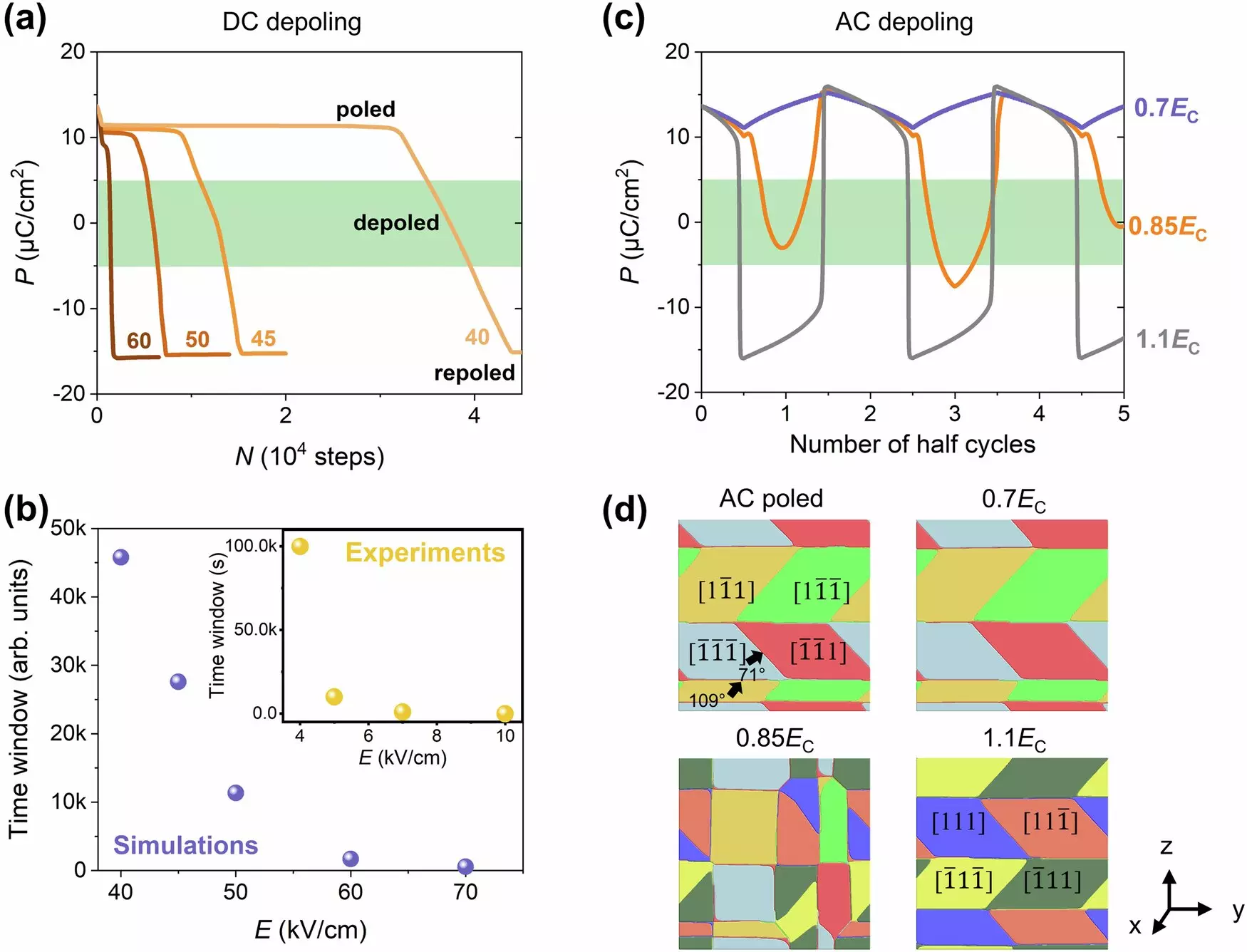Piezoelectric materials play an integral role in various technological applications such as ultrasound imaging and sonar systems. These materials harness mechanical stress to generate electrical charges or vice versa, making them essential for devices that rely on the generation and transmission of sound waves. The performance of piezoelectric materials is significantly enhanced through a process known as “poling,” which aligns the internal dipoles or charged ion pairs within the material. This alignment enables effective signal generation, crucial for applications that demand high precision and efficiency. However, this unique property comes with challenges regarding durability and maintenance, especially under conditions that may cause depolarization.
Despite their effectiveness, piezoelectric materials face a critical vulnerability: they can lose their piezoelectric properties when subjected to heat and pressure. It has traditionally been a cumbersome process to repair them once they are depolarized. Historically, restoring these materials has necessitated their removal from devices, with exposure to high temperatures—generally around 300 degrees Celsius. Such a procedure often results not only in significant downtime but also in substantial financial implications, especially given the cost associated with these specialized materials.
Thus, the prospect of depolarization has far-reaching effects on the manufacturing and operational efficiency of ultrasound and sonar technologies. The susceptibility of piezoelectric materials to temperature variations—even as low as 70 degrees Celsius—has made shipping and handling them complex undertakings. You can almost imagine a vicious cycle, where devices that generate heat during operation might inadvertently compromise the very materials that facilitate their functionality.
In a significant development, researchers have unveiled a novel approach to restore the properties of piezoelectric materials at room temperature, essentially revolutionizing how these materials can be maintained and repaired. According to a recent study published in Nature Communications, this new method allows for the depoling and repoling of relaxor-PbTiO3 piezoelectric single crystals without the need for heating.
This paradigm shift arises from the understanding that two distinct techniques exist for aligning dipoles in piezoelectric materials—applying direct current (DC) and alternating current (AC) electric fields. Applying a DC field has been the go-to method, but it poses challenges in terms of returning the material to its original state after depolarization. By contrast, the innovative use of AC fields provides a dual benefit: it can both depole and repole materials at ambient temperatures, facilitating easier and more effective repairs without the grafting process that requires extensive heat treatment.
The ramifications of this breakthrough technique extend far beyond mere upkeep of existing devices. By enabling room-temperature poling, manufacturers can reassess the entirety of their production processes. The newfound flexibility means they can diversify the types of materials employed in ultrasound and sonar technologies without fearing an adverse effect on the piezoelectric components. Research leader Xiaoning Jiang emphasizes the strategic advantage of this adaptability, stating, “Now we are free to optimize our component choices, enhancing overall device performance without compromising on essential material properties.”
This change could lead to advancements not only in the efficiency of ultrasound and sonar technologies but also in the design architecture of these devices. With the ability to maintain performance metrics in real-time rather than requiring high temperatures and significant resource investment, researchers and engineers alike can innovate with a more comprehensive perspective on device functionality and longevity.
Future Perspectives and Innovations
Looking toward the future, the discovery holds tantalizing prospects for next-generation ultrasound and sonar technologies. The fact that piezoelectric materials can now be repolarized repeatedly at room temperature opens doors to continuous performance enhancement and sustainable manufacturing practices. Moreover, with this room-temperature technique, the lifecycle of ultrasound devices could be extended, resulting in less waste—an important factor in an increasingly environmentally conscious world.
The advancement in the maintenance and repair of piezoelectric materials signifies a critical leap forward in material science and engineering. By turning the previous challenges of depolarization into a streamlined, efficient process, researchers have laid the groundwork for innovations that could redefine how we approach the design and execution of ultrasound and sonar devices. As research continues, it is likely that we’ll see more applications emerge, underscoring the potential of room-temperature techniques to reshape industries reliant on piezoelectric technology.


Leave a Reply